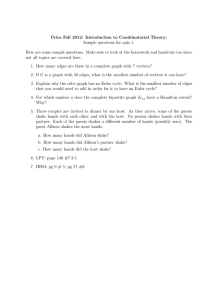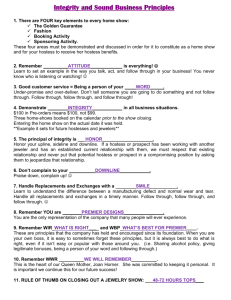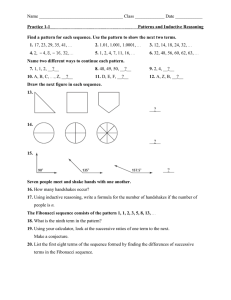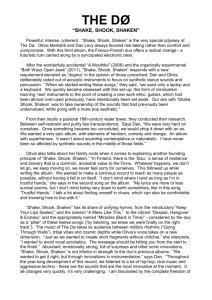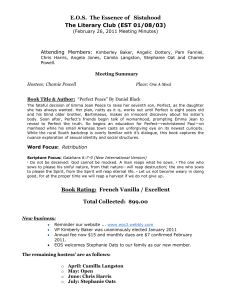Shaking Hands at a Party—C.E. Mungan, Fall 2004 n
advertisement
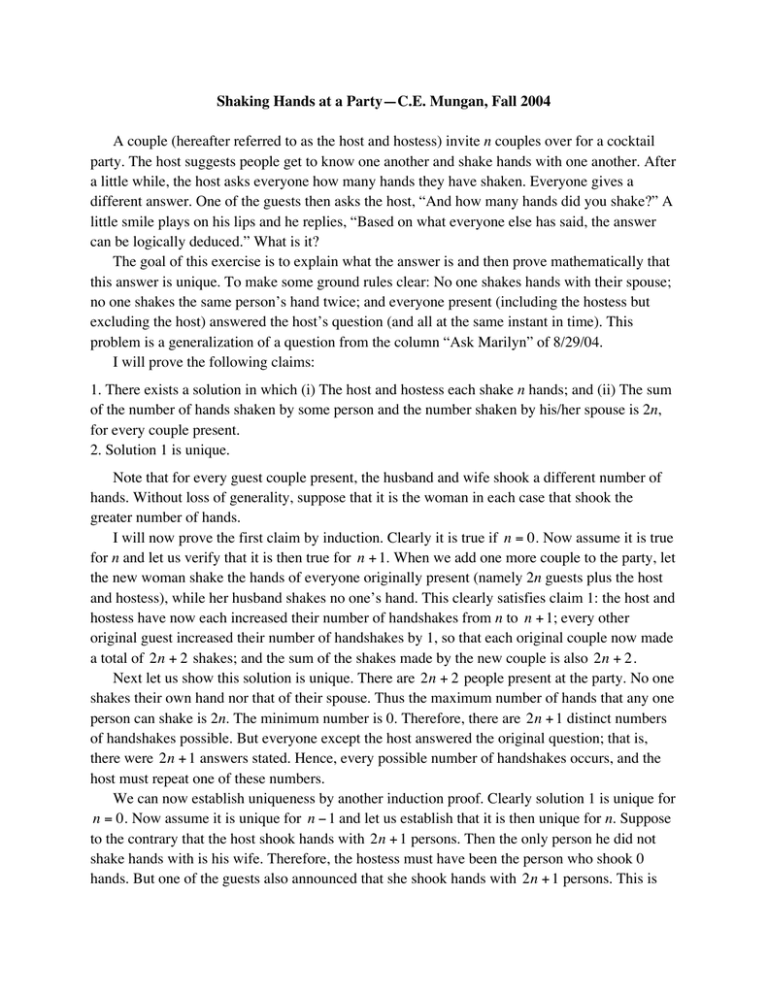
Shaking Hands at a Party—C.E. Mungan, Fall 2004 A couple (hereafter referred to as the host and hostess) invite n couples over for a cocktail party. The host suggests people get to know one another and shake hands with one another. After a little while, the host asks everyone how many hands they have shaken. Everyone gives a different answer. One of the guests then asks the host, “And how many hands did you shake?” A little smile plays on his lips and he replies, “Based on what everyone else has said, the answer can be logically deduced.” What is it? The goal of this exercise is to explain what the answer is and then prove mathematically that this answer is unique. To make some ground rules clear: No one shakes hands with their spouse; no one shakes the same person’s hand twice; and everyone present (including the hostess but excluding the host) answered the host’s question (and all at the same instant in time). This problem is a generalization of a question from the column “Ask Marilyn” of 8/29/04. I will prove the following claims: 1. There exists a solution in which (i) The host and hostess each shake n hands; and (ii) The sum of the number of hands shaken by some person and the number shaken by his/her spouse is 2n, for every couple present. 2. Solution 1 is unique. Note that for every guest couple present, the husband and wife shook a different number of hands. Without loss of generality, suppose that it is the woman in each case that shook the greater number of hands. I will now prove the first claim by induction. Clearly it is true if n = 0 . Now assume it is true for n and let us verify that it is then true for n + 1. When we add one more couple to the party, let the new woman shake the hands of everyone originally present (namely 2n guests plus the host and hostess), while her husband shakes no one’s hand. This clearly satisfies claim 1: the host and hostess have now each increased their number of handshakes from n to n + 1; every other original guest increased their number of handshakes by 1, so that each original couple now made a total of 2 n + 2 shakes; and the sum of the shakes made by the new couple is also 2 n + 2 . Next let us show this solution is unique. There are 2 n + 2 people present at the party. No one shakes their own hand nor that of their spouse. Thus the maximum number of hands that any one person can shake is 2n. The minimum number is 0. Therefore, there are 2 n + 1 distinct numbers of handshakes possible. But everyone except the host answered the original question; that is, there were 2 n + 1 answers stated. Hence, every possible number of handshakes occurs, and the host must repeat one of these numbers. We can now establish uniqueness by another induction proof. Clearly solution 1 is unique for n = 0 . Now assume it is unique for n − 1 and let us establish that it is then unique for n. Suppose to the contrary that the host shook hands with 2 n + 1 persons. Then the only person he did not shake hands with is his wife. Therefore, the hostess must have been the person who shook 0 hands. But one of the guests also announced that she shook hands with 2 n + 1 persons. This is impossible, since she did not shake hands with the hostess! So we have shown by contradiction that the host could not have shaken 2 n + 1 hands. Only one of the guests could have done so, and by the preceding logic, the only person at the party who announced he shook 0 hands is her husband. We now remove this couple from the party and every person mentally subtracts the handshake they received from this missing woman. We are left with n − 1 guest couples and with the revised announcements that the number of handshakes at the party varied between 0 and 2 n − 2 . But the solution for this case is assumed to be uniquely given by claim 1. QED
